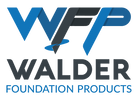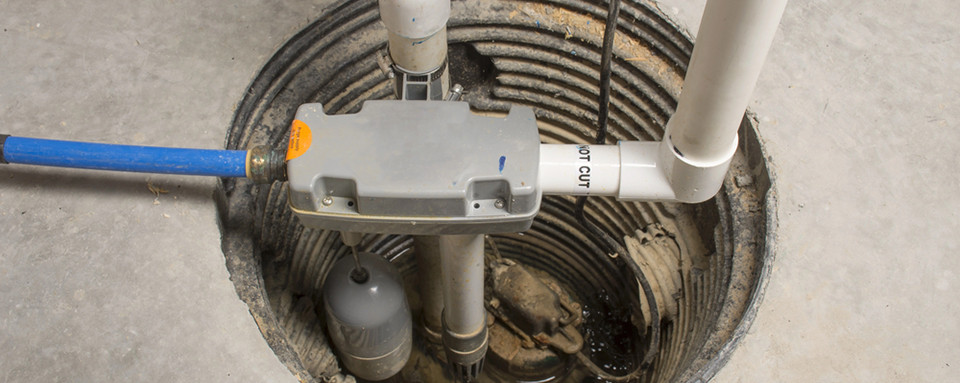Critical Features to Evaluate When Choosing the Right Sump Pump for Your Home
Choosing the most important features to consider when buying a sump pump can mean the difference between a dry crawlspace and thousands of dollars in flood repairs. This guide empowers Maryland homeowners to match sump pump horsepower, materials, switch types, backup systems, and manufacturer reputation to real-world crawlspace conditions. You’ll learn how a pump’s core function protects foundations, how to size for gallons per hour, which housing materials withstand moisture, which float switch ensures reliable activation, why battery backup is a must in storm-prone areas, plus alarms, clog resistance, and energy efficiency. Finally, we’ll explore warranty considerations, pump types, professional installation, and integrating sump pumps with vapor barriers and dehumidifiers so your home stays dry year-round.
What Is the Core Function of a Sump Pump in Your Home?
A sump pump is a submersible or pedestal device installed in a pit beneath your crawlspace floor to detect and remove excess water before it threatens your foundation. It activates when water rises to a set level, then channels moisture through a discharge line away from the structure, preventing flooding and hydrostatic pressure. Properly sized and installed, a sump pump safeguards against structural damage and reduces mold and pest risks in moisture-prone Maryland crawlspaces, setting the stage for choosing the right horsepower and capacity.
How Does a Sump Pump Protect Your Crawlspace and Foundation?
Sump pumps protect crawlspaces by ejecting standing water, reducing ground moisture that causes mold, rot, and wood decay. They relieve hydrostatic pressure to keep walls and joists dry, prevent standing puddles that invite termites and rodents, and maintain relative humidity below 60%, deterring mold growth. This continuous water removal preserves structural integrity and prepares you to assess essential pump components.
What Are the Essential Components of a Sump Pump System?
Every effective sump pump system consists of a sump pit or basin that collects groundwater and seepage, the pump unit (submersible or pedestal) containing the motor and impeller, a float switch or electronic sensor that triggers the motor, a discharge pipe directing water above ground level, and a check valve preventing backflow into the pit. Together, these parts ensure automatic activation, efficient drainage, and uninterrupted protection—key factors as you evaluate horsepower and flow rate.
How Do You Choose the Right Horsepower and Pumping Capacity for Your Sump Pump?
What Horsepower (HP) Is Best for Typical Residential Crawlspaces?
Most single-family home crawlspaces with moderate groundwater require a 1/3 HP pump, which balances adequate power and energy efficiency. Larger homes or high water tables may call for 1/2 HP or 3/4 HP units to handle heavier flow without overheating. Selecting the right motor rating prevents frequent cycling and premature failure while keeping operating costs in check.
How Is Gallons Per Hour (GPH) Flow Rate Calculated and Why Does It Matter?
Flow rate is measured at a specific head (vertical lift) and determines how much water the pump can move per hour. A pump rated at 2,500 GPH at 5 ft lift removes floodwater faster than a lower-capacity model, reducing overflow risk.
These performance benchmarks guide you in matching pump capacity to your foundation’s drainage needs and lead into using sizing calculators for precise selection.
How Can You Use a Sump Pump Sizing Calculator for Your Home?
A sump pump sizing calculator factors in pit volume, groundwater influx, drainage area, and water table depth to recommend horsepower and GPH. By entering your crawlspace dimensions and local rainfall data, you achieve a tailored specification. For added confidence, professional consultation ensures installation meets regional codes and maximizes pump life.
Which Sump Pump Materials Offer the Best Durability and Performance?
What Are the Benefits of Cast Iron, Stainless Steel, and Thermoplastic Pumps?
Cast iron’s thermal mass extends motor life by drawing heat away, offering exceptional wear resistance, though it is heavier and comes with a higher upfront cost. Stainless steel provides a corrosion-proof finish, a premium price, but excellent long-term rustproof performance and value. Thermoplastic suits lighter-duty pits, being lightweight and chemical-resistant, but offers less heat dissipation and may not endure constant heavy flow.
How Does Material Quality Affect Heat Dissipation and Motor Life?
Metal housings conduct heat away from the motor more effectively than plastic, lowering operating temperatures and reducing wear on bearings and seals. This enhanced thermal management prolongs service intervals and minimizes unexpected failures, guiding your choice toward robust cast iron or stainless steel options for Maryland’s high-humidity crawlspaces.
What Types of Float Switches Are Available and Which Is Most Reliable?
How Do Vertical, Tethered, Electronic, and Diaphragm Float Switches Work?
A float switch determines when the pump engages by detecting water level changes. A vertical float switch moves up and down on a rod, providing consistent activation in narrow pits. A tethered float switch swings freely, filling with water to trigger at a preset level—versatile but may snag. An electronic sensor uses conductivity or ultrasonic signals for switch-free activation, offering precise control. Lastly, a diaphragm switch senses pressure changes as the pit floods, activating the pump without moving parts. Each mechanism balances space, reliability, and maintenance, with vertical float switches excelling in confined crawlspace basins.
Which Float Switch Type Is Best for Crawlspace Sump Pumps?
Vertical float switches provide the most reliable, snag-free activation in shallow, narrow pits, while electronic sensors excel where mechanical interference is a concern. Selecting a switch that resists jamming and delivers consistent start/stop cycles ensures uninterrupted crawlspace protection.
Why Is a Battery Backup System Essential for Your Sump Pump?
What Are the Advantages of Integrated vs. Standalone Battery Backup Systems?
Integrated backups combine primary and secondary pumps in one assembly, simplifying installation and monitoring. Standalone systems add a separate unit that engages only when power fails, offering flexibility but requiring additional space and wiring. Both options guarantee activation during outages, but integrated units streamline maintenance.
How Does a Battery Backup Ensure Continuous Operation During Maryland Storms?
By automatically switching to a deep-cycle marine battery, backup systems maintain 24/7 pump readiness even when the grid goes down. This uninterrupted flood prevention keeps crawlspaces dry, reduces mold risk, and ensures peace of mind during hurricane-season power interruptions.
What Additional Features Should You Consider When Buying a Sump Pump?
How Do Sump Pump Alarms Help with Early Flood Detection?
An audible or wireless alarm alerts you if the primary pump fails or water levels exceed safe limits, enabling prompt action before damage escalates. Early warning systems protect belongings and structural components from prolonged exposure to moisture.
What Is Clog Resistance and How Does Impeller Design Affect It?
Clog resistance refers to a pump’s ability to handle solids without jamming. For instance, vortex or recessed impellers allow debris to pass through, while open-channel impellers reduce blockages from mud and silt. Sealed impellers, on the other hand, offer cleaner discharge but require pre-filtered pits. Optimized impeller design prevents unexpected downtime and extends motor life in grit-laden groundwater.
How Can Energy-Efficient Sump Pumps Save You Money Long-Term?
High-efficiency motors draw less amperage per GPH, lowering electricity bills and reducing heat stress on components. Over time, reduced operating costs and fewer repairs offset modest premium pricing, delivering a more economical solution for continuous crawlspace protection.
How Do Warranty and Brand Reputation Influence Your Sump Pump Choice?
What Warranty Lengths Are Typical and What Should You Look For?
Most residential sump pumps carry 1–5-year limited warranties. Seek models with at least 3-year coverage on motor and housing, plus pro-rated service options. Extended warranties reflect manufacturer confidence and deliver greater long-term value.
Which Brands Are Recommended for Quality and Durability?
Selecting a brand with proven crawlspace performance minimizes downtime and maximizes flood protection. Recommended brands include Zoeller, renowned for cast iron construction and robust motors; Wayne, which offers versatile float switches and budget-friendly reliability; and Liberty Pumps, known for innovative backup solutions and corrosion-resistant housing.
What Are the Different Types of Sump Pumps and Which Is Best for Your Home?
What Are the Advantages of Submersible Sump Pumps for Crawlspaces?
Submersible pumps sit below water level, providing quiet operation and superior solids handling. Their sealed housing resists corrosion, making them ideal for tight crawlspace pits where noise and debris are concerns.
When Is a Pedestal Sump Pump a Suitable Choice?
Pedestal pumps place the motor above the pit, simplifying maintenance and lowering initial cost. They work best in dry, shallow pits with minimal debris but can be noisier and expose electrical components to humid air.
What Are Combination and Water-Powered Sump Pumps?
Combination pumps integrate primary and battery backup in one unit for seamless protection, while water-powered pumps use municipal water pressure for backup operation. Both specialized types ensure flood defense when electricity is unavailable.
Why Is Professional Sump Pump Installation and Maintenance Important?
How Does Professional Installation Improve Performance and Warranty Validity?
Certified technicians size the pit correctly, position check valves to prevent backflow, and wire the unit to dedicated circuits. Following manufacturer guidelines preserves warranty coverage and ensures the system operates at rated capacity.
What Are Essential Maintenance Tips for Homeowners?
Essential maintenance tips for homeowners include inspecting and testing float switch travel monthly, clearing debris from the sump pit and impeller housing, verifying discharge pipe and check valve functionality, testing battery backup under simulated power-out conditions, and scheduling annual professional tune-ups. Routine care prevents unexpected failures and extends service life, leading into involving other waterproofing solutions.
How Can You Integrate Your Sump Pump with Other Crawlspace Waterproofing Solutions?
What Role Do Vapor Barriers and Dehumidifiers Play Alongside Sump Pumps?
A thick polyethylene vapor barrier blocks ground moisture from entering, while a dehumidifier extracts ambient humidity. Combined with active water removal from a sump pump, this trio maintains a dry, healthy crawlspace environment.
How Does a Comprehensive Crawlspace System Prevent Mold and Pest Problems?
By eliminating excess water and humidity, this integrated approach removes the habitat mold spores and insects require. Professional installation of sump pumps, vapor barriers, and dehumidifiers ensures a sealed, climate-controlled zone that inhibits microbial growth and discourages rodents and insects.

